No. 148 On a winning streak – The Rails Rapido Dynamometer Car
It has just been announced that the Rails Rapido Dynamometer Car has won the 2018 first ever Hornby Best OO Scale Wagon or Carriage Awards. Deservedly I would say. My model was purchased long before the awards were announced. The model is highly detailed and very well made. I think more a scale model than an item of model railway rolling stock.
Ex LNER Dynamometer Car - complete with magic wand (to
turn on the lighting)
Over the course of a year I buy the odd item from Rails of
Sheffield. This year Rails have been putting in their parcels, an advertising
flyer for the ex LNER Dynamometer Car. It was made for Rails by Rapido, a
Canadian business. The advertising flyer did not pass unnoticed by my wife who
eyes, with a certain degree of suspicion, the various brown boxes delivered by
our Postie. “Are you going to buy one?” she asked, followed by “I think you
should get one”.
Well – how could I resist!
Ex LNER Dynamometer Car
My layout is ‘60s based with the odd example left over from
the ‘50s. I have attached here as an Addendum, a copy of the advertising
literature put out by Rails. This literature provided courtesy of the National
Railways Museum indicates that the Dynamometer Car remained in service until
1954. Rails offered two variants. The first represented the coach in 1938 on
the occasion of Mallard’s record breaking run. The second modelled the coach at
the start of ‘Nationalisation’ when it was used for the locomotive exchange
trials comparing the performance of engines from the ’Big Four’ pre-war
companies. I would buy the later version as used for the late 1940s locomotive
trials and make believe that in the early 50’s the Dynamometer Car appeared
behind some of my Early Emblem Pacifics.
Ex LNER Dynamometer Car – 1950s view with Bachmann
Commonwealth of Australia
I say ‘make believe’ because pictures of the Dynamometer Car
in use for the locomotive trials show engines with what I will call
‘transition’ liveries. For example the images of A4s below show the engines
with their British Rail number, ‘British Railways’ written on the tenders, but
without any emblem or crest. Although the pictures are only black and white my
guess is that the ‘Lord Faringdon’ 60034 at Kings X is painted in a version of
the old NER Apple Green rather than the experimental Blue or later Brunswick
Green favoured by British Rail.
Ex LNER Dynamometer Car during Locomotive Exchange
trials, Courtesy 'East Coast Pacifics at work' Townsend PN (1982)
The Dynamometer Car is highly detailed, for example it comes
with full brake rigging for each bogie. The inside of the coach has also
apparently been faithfully copied. Lighting is provided in the roof of the
coach to assist with viewing the chairs, tables and instruments that are
modelled within the coach interior. The lighting is switched on and off with a
‘Hi-Tech magic wand’ which has a magnet at one end to operate the reed switch
in the roof of the coach. I have to say that operation of the lighting on my
layout with Gaugemaster DS controllers appears erratic. Sometimes the lighting
comes on straight away with the power from the controller. On other occasions
the magic wand has to be waved over the roof of the coach to bring on the
illumination.
Interior of Ex LNER Dynamometer Car from Rails of
Sheffield by Rapido
I have posted a couple of videos on YouTube showing the car
in use behind Bachmann A4 Commonwealth of Australia in ‘daylight’ and in ‘the
dark’. It runs very well. Although a minor detail, I have changed the couplings
to close the gap between engine and carriage. The coach comes fitted with what
look like Bachmann straight type (36-30) and I have replaced with Bachmann
short straight type (36-61).
I spent a large chunk of my life working in engineering
researching, at (I was told) the ‘Cutting edge of Technology’. At university
computer input was from punched cards while data from experimental transducers
was recorded manually. In my first position after university, agricultural
engineers were trialling mini computers the size of big suit cases to collect
data on board potato harvesters. Not many years later the first ‘Personal
Computers’ appeared and I remember a trip to the outskirts of Edinburgh to buy
an 8086 machine with 40Mb hard drive. Reading the history of the Dynamometer
Car I had to smile that the vehicle was conceived prior to the First World War
and was still in active service nearly 50 years later. One of my immediate
thoughts was ‘how were the sensors calibrated’? The model sports a ‘measuring
wheel’ beneath the centre of the car – I am guessing to record distance (and
perhaps speed). If the wheel was nominally 3ft diameter, roughly similar to a
standard coach wheel, it is fascinating to explore the magnitude of error due
to a reduction in diameter due to wear. For example if the radius of the
measuring wheel decreased by 1/16 inch it would have a smaller circumference
and would have turned faster than when new and unworn. In these circumstances
Mallard might only have been travelling at 125mph with instrument error
accounting for the extra one mile per hour.
The imitation teak, the clerestory roof and ‘north eastern
style’ duckets all point to times long gone. Fifty years on from Mallard’s
126mph record run I used to travel frequently on HSTs from Newcastle that
regularly topped 125mph between Darlington and York. These train sets worked
day in and day out, with diagrams taking in Aberdeen, Bournemouth and Glasgow,
often all in the same day. This progress was all made without a dynamometer
car. The advent of the computer chip had encouraged the development of
miniature transducers and compact data collection units that enabled
performance monitoring to be carried out ‘on board’ trains with minimal
interference to train crews and passengers.
No longer is there a need for a dedicated and somewhat
cumbersome special carriage.
Addendum - Prototype History - Courtesy of the
National Railway Museum.
Designed and built by the North Eastern Railway, at the
railway's York Carriage Works to diagram 10IA at a cost of £1500, the
dynamometer car entered traffic in March 1906 in the NER's Crimson Lake livery
with the running number 3591. The vehicle's first working was on the 6th March
1906 behind R class locomotive No. 2109.
The purpose of a dynamometer car was to measure drawbar
pull and speed, from which drawbar horsepower could be calculated. Over time
the vehicles became more sophisticated and could evaluate coal and water
consumption, along with combustion efficiency (by analysis of smokebox
temperature and gases). All such data enabled designers and engineers to
develop more efficient locomotives.
In June 1924 the vehicle was repainted into imitation
grained teak livery and was rebranded LNER with the running number amended to
read 3591Y. Its first run in its new guise took place on 26th June 1924 behind
No. 4419 on the GN section.
The next notable event in the vehicle’s history took
place on 3rd April 1928 when it entered York works for overhaul. During which
time it received Gresley bogies and had corridor connections fitted. It also
had a full repaint in imitation teak livery and received the running number
23591, before being released into traffic on 25th August 1928.
Further alterations took place to its external appearance
in late 1936 when NER style window duckets were fitted. On 3rd July 1938 a
'high-speed' brake trial brought class A4 locomotive No. 4468 'Mallard' and the
dynamometer car to prominence with the record breaking 126mph run down Stoke
Bank. Version one of our model portrays the car as it would have been seen on
this famed journey. Soon after 3rd July 1938 the dynamometer car went into
storage, where it remained throughout World War 2.
Late in May 1946 the car re-emerged bearing the new
running number 902S02 (as worn by version two of our models). It appears that
no further work was done on the vehicle during storage. On 30th May the vehicle
undertook a staff training run behind locomotives Nos. 484 and 1766, after
which the vehicle saw constant usage on the LNER culminating in several runs on
the GE section between London Liverpool Street and Norwich between 8th and 24th
October 1947.
On 26th February 1948 the car moved to Derby for
calibration along with the GWR and LMS dynamometer cars. 8th April 1948 saw the
start of the locomotive exchange trials. During this period the car saw
extensive use and could be seen as far apart as Inverness and Severn Tunnel
Junction. In September 1948 the car entered the works for overhaul, during
which it received a full repaint, 'British Railways' branding and the running
number E902502. It was eventually released to traffic in April 1949.
The dynamometer car's last recorded journey was in
October 1951 when it travelled from Stourton (Leeds) to Lancaster and return
behind a Hunslet 500HP 0-8-0 locomotive, No.E6 that was destined for Peru.
During the car's working life it undertook a recorded
1872 journeys, many behind locomotives such as Gresley W I 'Hush Hush', AI, A3
and A4 pacific's, Thompson A2's and B1's, plus an assortment of LNER freight
and mixed traffic locomotives. During the locomotive exchanges of 1948, it
could be seen behind SR Merchant Navy and West Country classes, GWR Kings and
LMS Royal Scot and Coronation class locomotives as well as an assortment of
freight and mixed traffic types.
In the post exchange period before withdrawal, the
dynamometer car was used on the Southern Region to test Bulleid's ill-fated
'Leader' No. 3600I, before going to the GE section to work behind Britannia
No.70006 and B1 No. 61270 on the London Liverpool Street to Norwich
services.
The vehicle was finally withdrawn in December 1954 and
subsequently preserved by the Science Museum. The dynamometer car is currently
on display at the National Railway Museum, York, and wears LNER imitation teak
livery which it has carried since 1963.
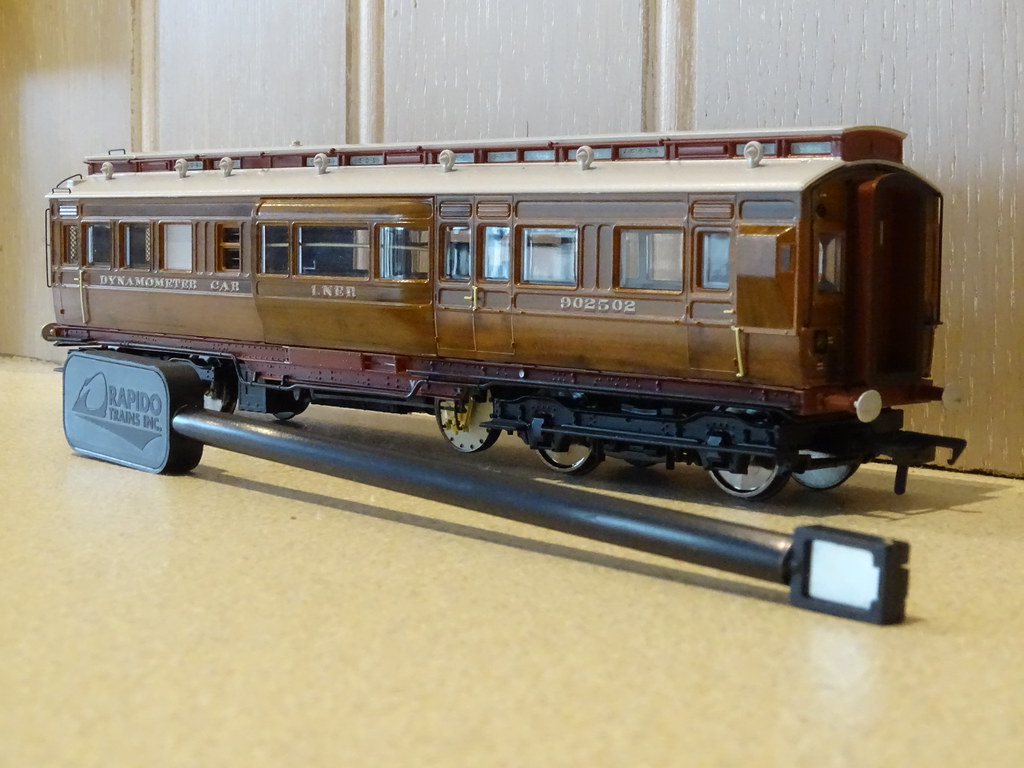
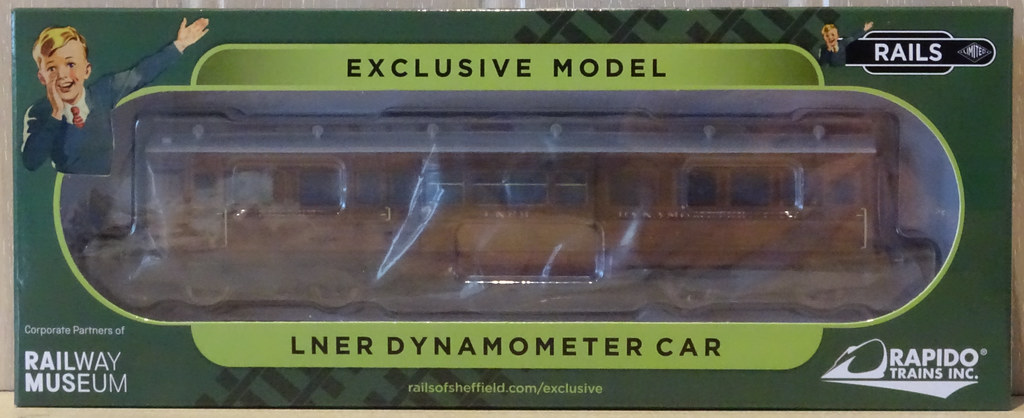
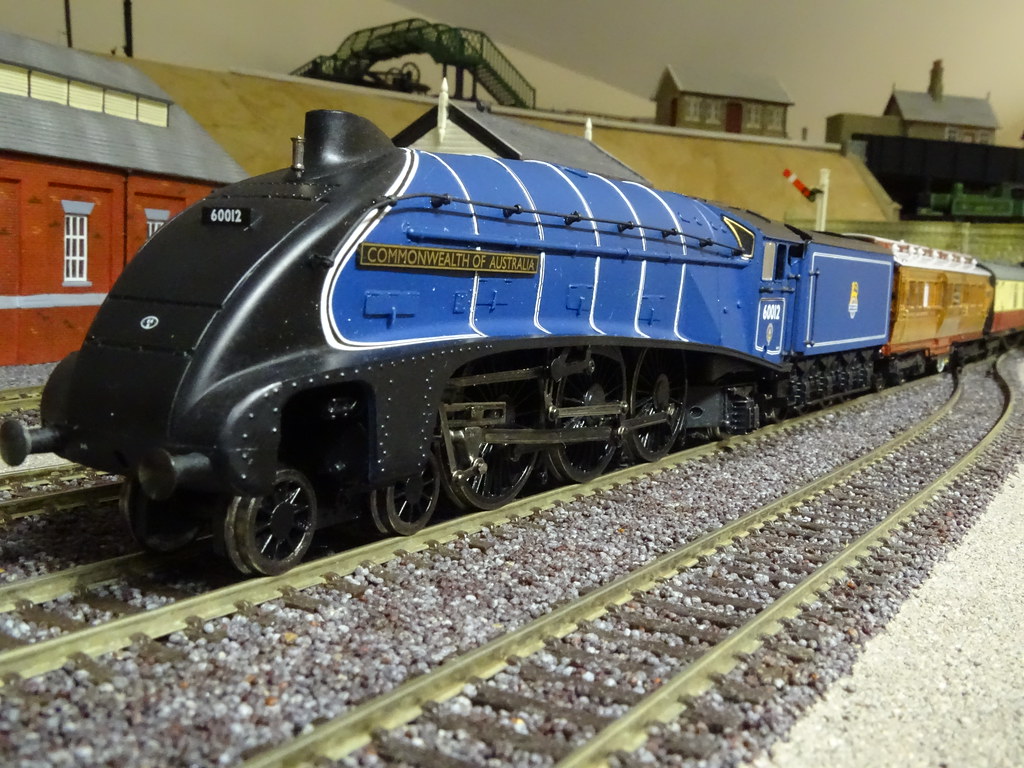


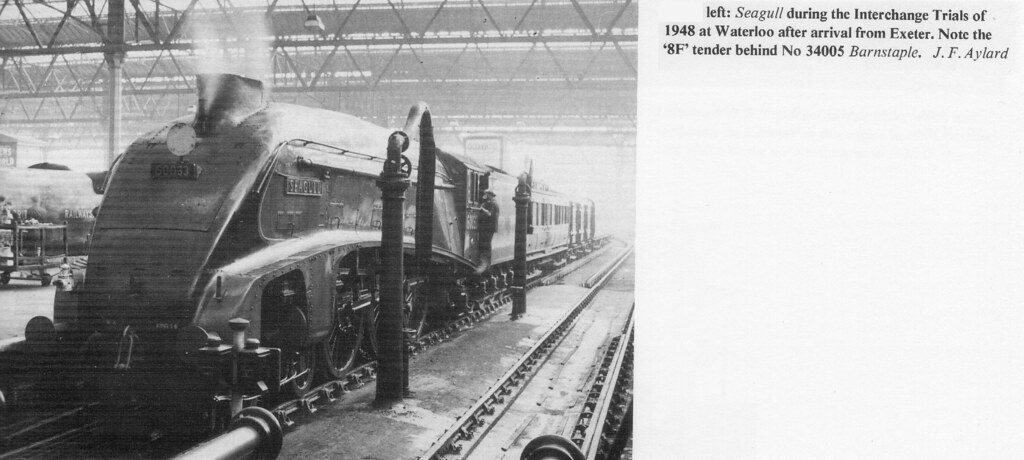
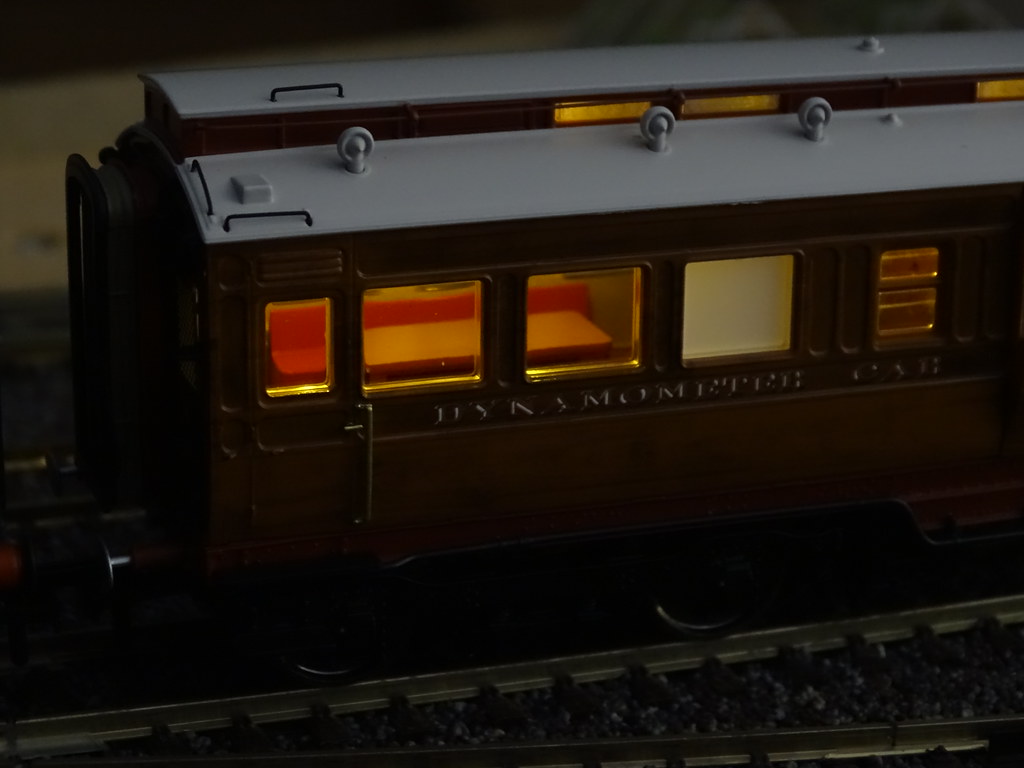
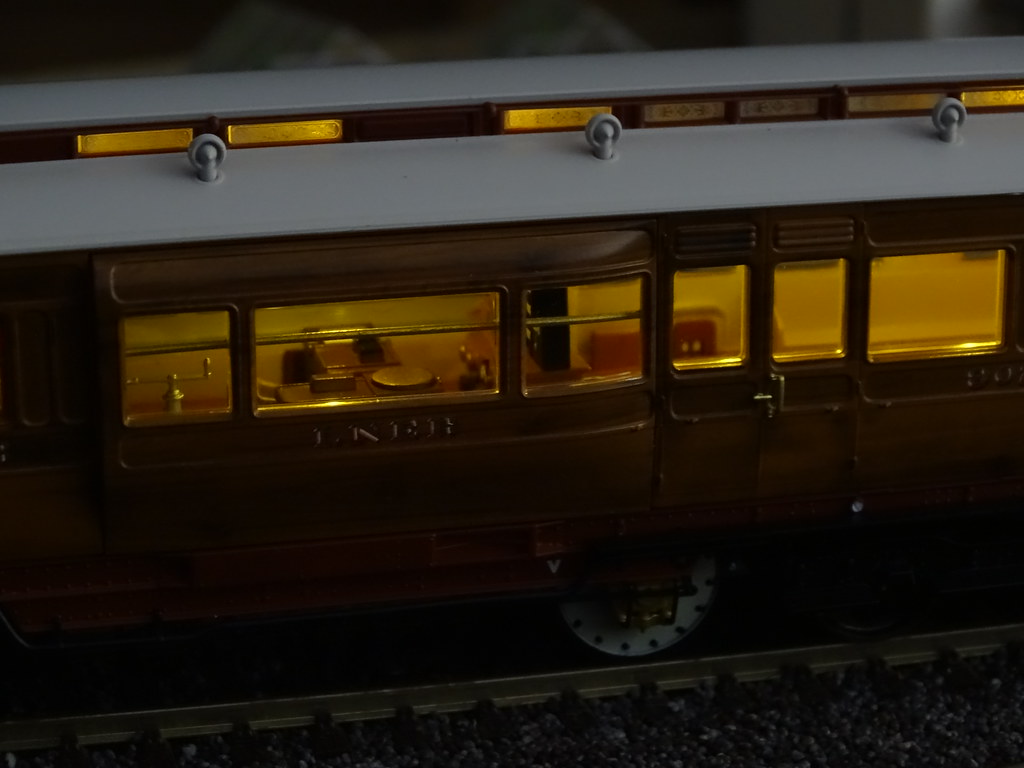
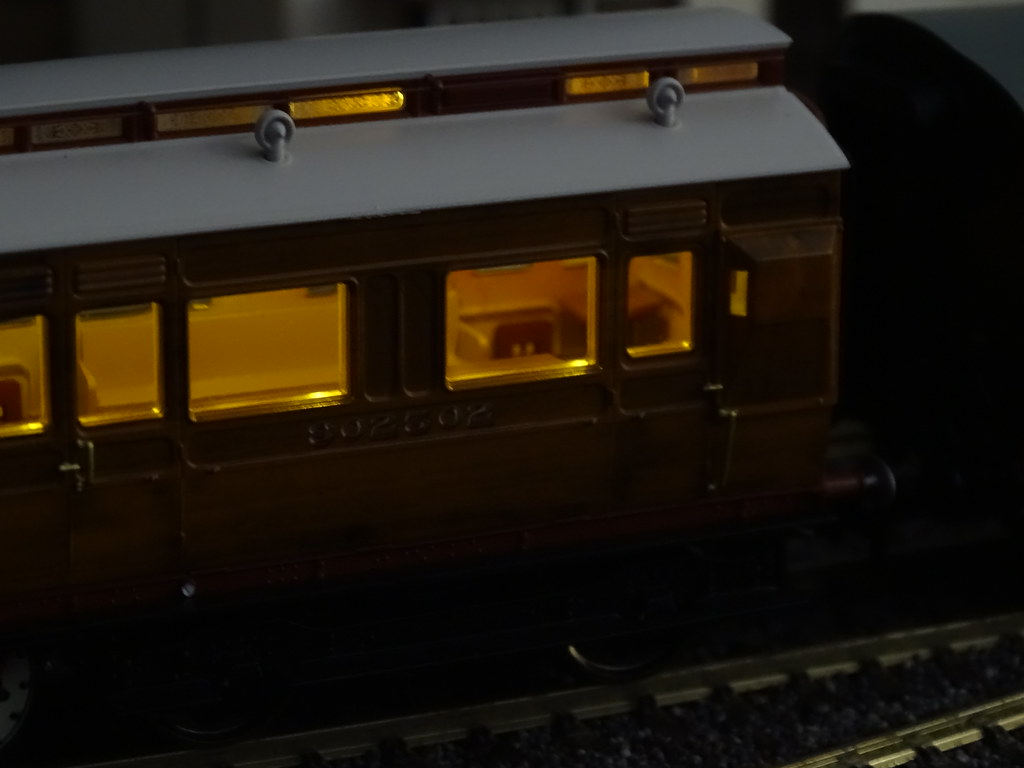
Comments